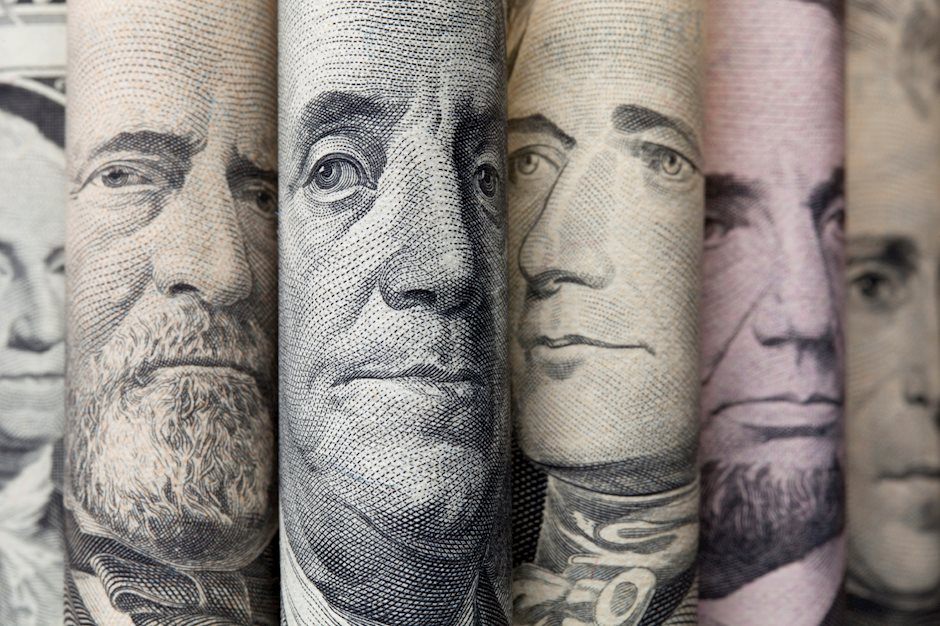US Dollar dips as US Treasuries decline, Fed comments
- The DXY declined to 104.20 on Tuesday.
- The US service sector continues to show robustness, making markets disregard an interest rate cut in March.
- US Treasury yields continue to rise, boosting the Greenback.

The US Dollar (USD) Index, currently trading at 104.20, has been on a downward trend due to investors cashing in their profits alongside the impact of statements from Loretta Mester, the president of the Federal Reserve Bank of Cleveland. Mester warned about the risks of doing too much in terms of tight monetary policy and how it could affect the labor market.
The US Federal Reserve's hawkish hold, justified by a robust jobs report and continuous strong growth in Q1, made expectations for Federal Reserve (Fed) rate cuts begin to wane. This has favored the Greenback in the last few sessions. Several other Fed officials will be on the wires during the week, and they may dictate the pace of the USD as markets await fresh economic reports.
Daily digest market movers: US Dollar declines on the back of lower US Treasury yields
- Fed’s Loretta Mester commented that the bank should be attentive to risk that the labor market will cool faster than expected in reaction to restrictive monetary policy.
- She also added that the Fed will gain the confidence to cut this year.
- In her view, she is expecting three rate cuts in 2024.
- US Treasury yields are declining with 2-year, 5-year and 10-year bonds trading at of 4.40%, 4.04% and 4.09%, respectively.
- CME's FedWatch Tool hints at lesser odds for a rate cut in March, which currently stand at 15%. Those odds rise to 50% for the May meeting, but the probabilities of a hold are also high.
Technical analysis: DXY bulls give up the 20-day SMA while taking profits
The indicators on the daily chart are reflecting a short-term shift in momentum toward the sellers, yet the long-term trend still seemingly remains in favor of the bulls. Despite a negative slope, the Relative Strength Index (RSI) is holding onto positive territory, suggesting a pullback or period of consolidation instead of a major trend reversal.
The flat green bars in the Moving Average Convergence Divergence (MACD) indicate potential indecision in the market where the momentum could easily shift in favor of buyers with the right catalyst. However, this flat-lining action in the MACD may also signify exhaustion from buyers, hinting that bears might soon step in to take control.
Given the index position with relation to its Simple Moving Averages (SMAs), the bulls, although weakened recently due to profit-booking, seem to have a major say in the broader trend. The DXY is trading above the 100 and 200-day SMAs, suggesting an overall bullish bias in the longer-term market sentiment even though it slipped underneath the 20-day SMA.
Fed FAQs
What does the Federal Reserve do, how does it impact the US Dollar?
Monetary policy in the US is shaped by the Federal Reserve (Fed). The Fed has two mandates: to achieve price stability and foster full employment. Its primary tool to achieve these goals is by adjusting interest rates.
When prices are rising too quickly and inflation is above the Fed’s 2% target, it raises interest rates, increasing borrowing costs throughout the economy. This results in a stronger US Dollar (USD) as it makes the US a more attractive place for international investors to park their money.
When inflation falls below 2% or the Unemployment Rate is too high, the Fed may lower interest rates to encourage borrowing, which weighs on the Greenback.
How often does the Fed hold monetary policy meetings?
The Federal Reserve (Fed) holds eight policy meetings a year, where the Federal Open Market Committee (FOMC) assesses economic conditions and makes monetary policy decisions.
The FOMC is attended by twelve Fed officials – the seven members of the Board of Governors, the president of the Federal Reserve Bank of New York, and four of the remaining eleven regional Reserve Bank presidents, who serve one-year terms on a rotating basis.
What is Quantitative Easing (QE) and how does it impact USD?
In extreme situations, the Federal Reserve may resort to a policy named Quantitative Easing (QE). QE is the process by which the Fed substantially increases the flow of credit in a stuck financial system.
It is a non-standard policy measure used during crises or when inflation is extremely low. It was the Fed’s weapon of choice during the Great Financial Crisis in 2008. It involves the Fed printing more Dollars and using them to buy high grade bonds from financial institutions. QE usually weakens the US Dollar.
What is Quantitative Tightening (QT) and how does it impact the US Dollar?
Quantitative tightening (QT) is the reverse process of QE, whereby the Federal Reserve stops buying bonds from financial institutions and does not reinvest the principal from the bonds it holds maturing, to purchase new bonds. It is usually positive for the value of the US Dollar.
Author

Patricio Martín
FXStreet
Patricio is an economist from Argentina passionate about global finance and understanding the daily movements of the markets.

















